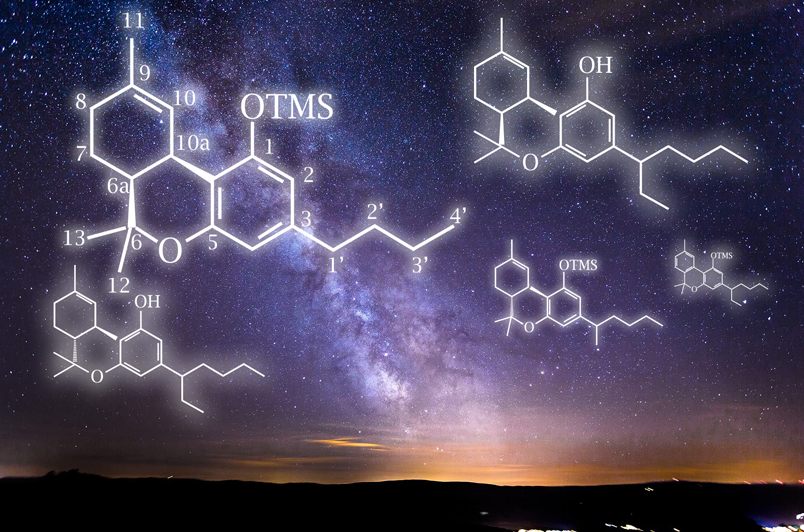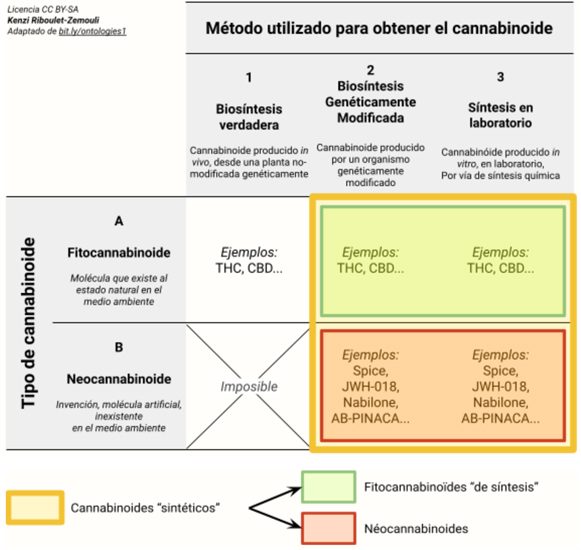Kenzi Riboulet (he adapted from Newsweed.fr)
In recent months, in France, England, Switzerland, etc., a “chemically-altered weed”, capable of “sending people to the hospital” in just a few puffs of smoke has landed on the (de-regulated) cannabis market. But what are those dangerous cannabis-related molecules? Cannabis is a drug known for its real, but moderate, risks to health; and certainly not for being prone to cause death or hospitalisation just for using it. Then, what are we really talking about?
Germany has already paid a high price with five deaths in 2020. This is causing panic not only in cannabis circles but also in the scientific press. In January, Vice launched a documentary about a dealer of these “synthetic cannabinoids” in Berlin, which has been viewed already more than a million times. Since October 2020, swiss authorities and doctors have warned of the presence of “dangerous synthetic cannabinoids in the black market”, specifying that “the synthetic cannabinoid CUMYL-4CN-BINACA, (…), very potent, has been linked to more than 100 deaths in Europe” (33 deaths in 2020 only). They added that “since last summer, it’s the synthetic cannabinoid MDMB-4en-PINACA, 50 to 100 times stronger than Δ 9-THC, that has been linked to recurrent alerts”. To this day, there are at least 169 different “synthetic cannabinoids” listed by the European Monitoring Centre for Drugs, and the number has increased since the beginning of the pandemic.
So, what are we talking about exactly? First off, we need to completely discard the term “synthetic cannabinoids”, because cannabis is a plant that, currently, cannot be copied, imitated, or reproduced chemically. Only the cannabinoids Δ 9-THC or CBD (molecules in cannabis composition that are well-known) can be chemically reproduced.
That is right: Δ 9-THC and CBD can be obtained in the laboratory, without the plant. The molecules obtained this way are actual synthetic cannabinoids. However, Δ 9-THC and CBD have the exact same effects on the body regardless of their natural or synthetic origin. The molecules are the same, they have simply been obtained in a different way: extracted from the plant or reproduced in vitro.
There is currently a third way of obtaining Δ 9-THC and CBD: from genetically modified living organisms (plants, microorganisms, or others). Even when obtained this way, Δ 9-THC and CBD are still the same molecules we are familiarised with, molecules we have extensively studied and experimented with during centuries.

Both Δ 9-THC and CBD, generated in the hemp plant (cannabis), are called phytocannabinoids (obtained from the plant, derived of the Greek term φυτόν, -phyto, “plant”). Since the production method does not affect their chemical structure or their pharmacological effect, CBD and Δ 9-THC are phytocannabinoids in all cases, even when they are obtained in the laboratory.
Method used to obtain the cannabinoid (graph legend)
1.True biosynthesis: Cannabinoid produced in vivo, from a genetically modified plant
2.Genetically modified biosynthesis: Cannabinoid produced by a genetically modified organism
3.Laboratory synthesis: Cannabinoid produced in vitro, in a laboratory, using chemical synthesis
A: Phytocannabinoid: Molecule existing in natural state in the environment. Examples: THC, CBD…
B: Neocannabinoid: Invention, artificial molecule, non-existing in nature. Examples: Spice, JWH-018, Nabilone, AB-PINACA…
Therefore, the term “Synthetic” cannabinoids ambiguously refers to both “Synthesis” phytocannabinoids and Neocannabinoids.

As it can be observed, it does not matter how we obtain them, phytocannabinoids are always the same, whether they are synthetic phytocannabinoids or phytocannabinoids extracted from plants.
The synthetic Δ 9-THC, for instance, is used as a medicine (like Marinol®, available in several European countries) and synthetic CBD is used in certain cosmetics (for instance, Swiss company Blossom creams). But phytocannabinoids from synthesis are also present sometimes in the black market, although their presence is marginal.
Those are not the molecules that have experts concerned and the media panicking. The cannabinoids AB-PINACA, CUMYL-4CN-BINACA or MDMB-4en-PINACA (and many others identified by the substance analysis services) are not phytocannabinoids. They are not found naturally in the environment: as opposed to synthetic Δ 9-THC, they are not a reproduction of a molecule already known and studied. To the contrary, they are inventions, new molecules, of the kind called “designer drugs”, generally listed under the category of “new products of synthesis” (NPS) by the authorities. A study dated December 2020 proposes calling them “neocannabinoids” in order to differentiate these molecules from synthetic phytocannabinoids. And yet, they are not so new: the first neocannabinoids invented date back to the 70s, like, for instance, JWH-018, better known as “Spice”. Some of them are commercialised as medicines, as AB-PINACA, HU-210 or nabilone.

As we can see, the expression “synthetic cannabinoids” comprises a large variety of molecules. The term “neocannabinoid” (similarly to the term “neonicotinoids”, derived of the Latin neo-, “new”) was born from a deep reflection about the terminology of cannabinoids, and deserves consideration as an option that would prevent confusions. More so now, when the chemical compounds keep diversifying and their presence in pharmacies increases, as does their availability in illegal markets.
“The use of a word talks about the world surrounding it, it gives us information about connotation, defines who uses it and who receives it… the word transmits multiple information, true or false, conscious or unconscious”, the Swiss addiction doctors remind us. Accordingly, the term “neocannabinoid” will surely facilitate the understanding amongst all parts, and prevent misinterpretations about molecules that have appeared in recent decades. The scientific community has so far performed very few studies about their effects on health, as opposed to Sativa cannabis and its well-known compounds.
